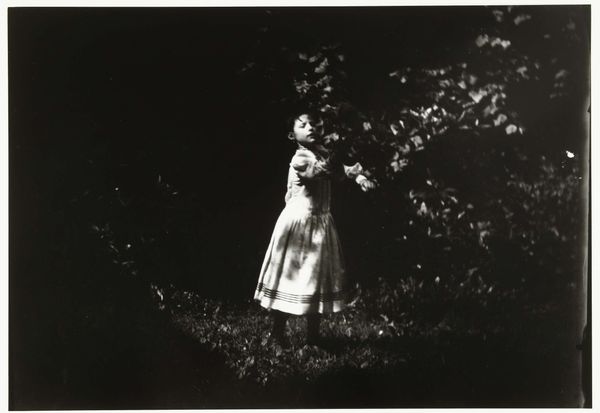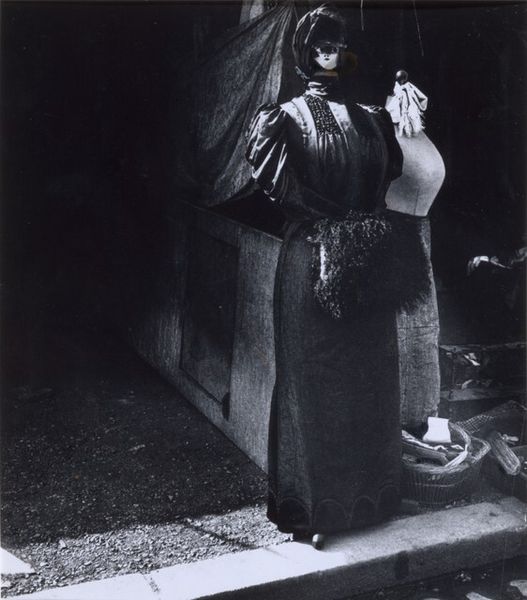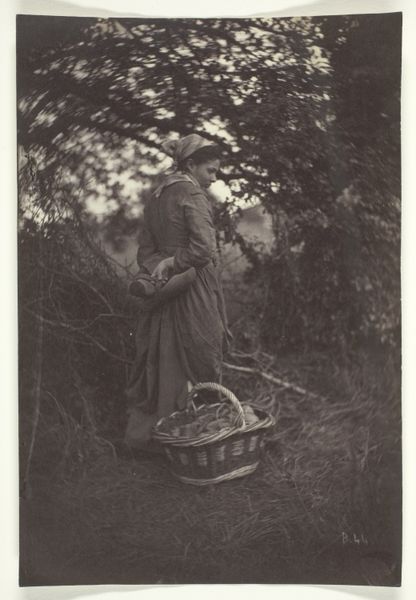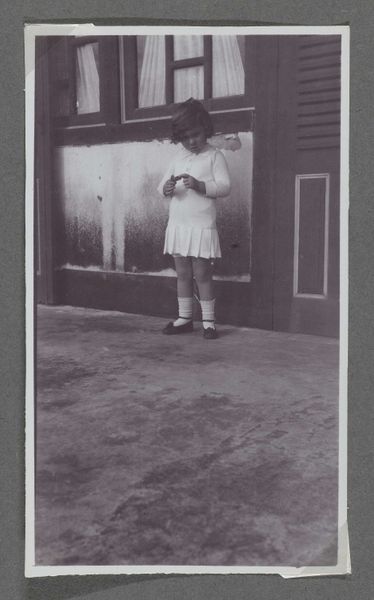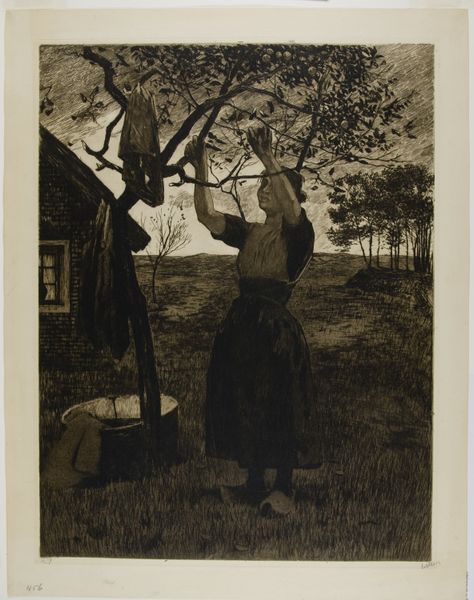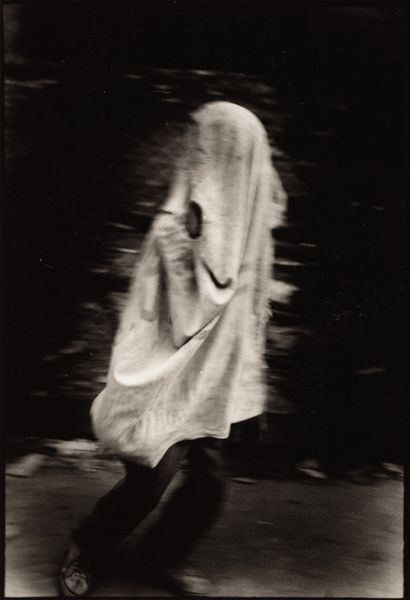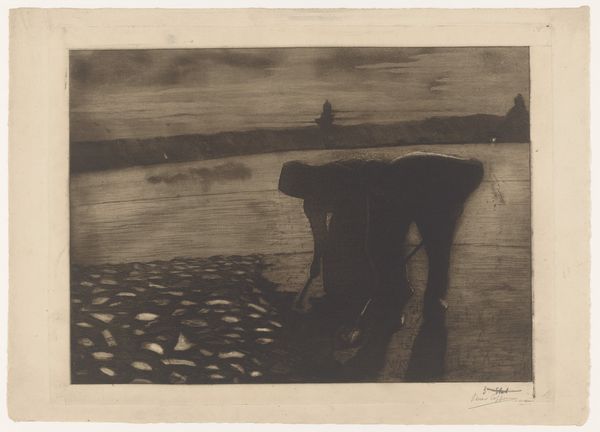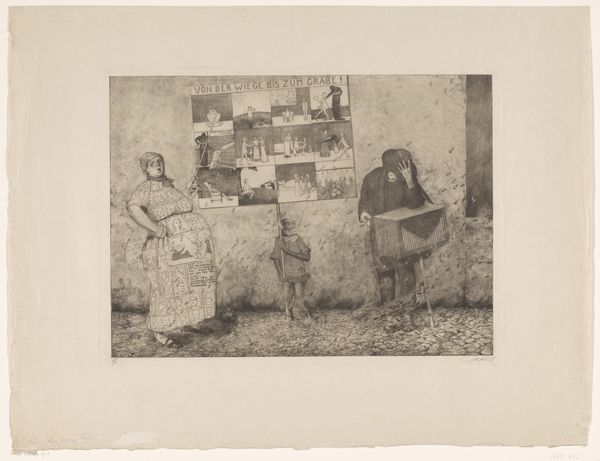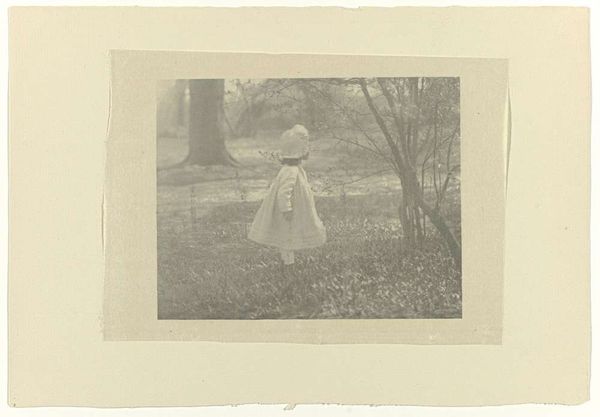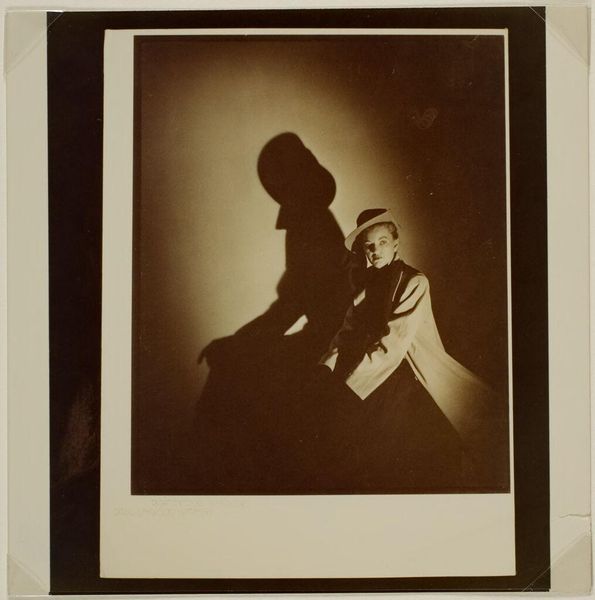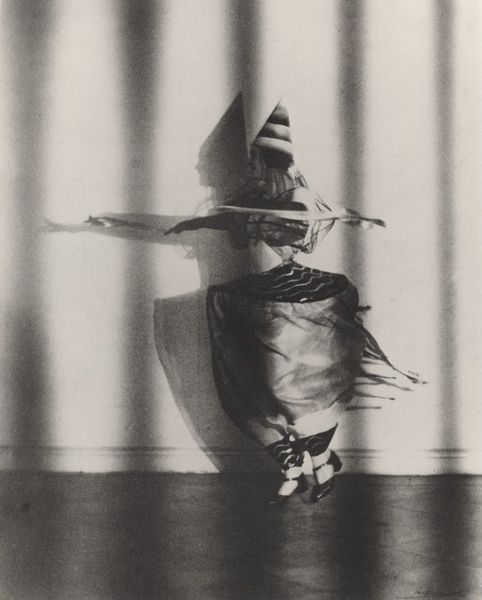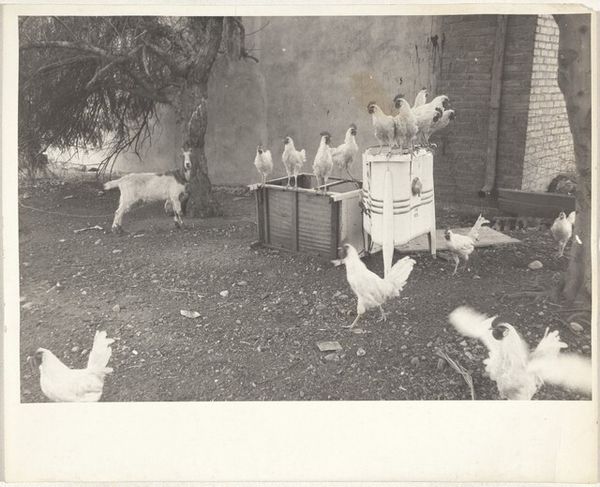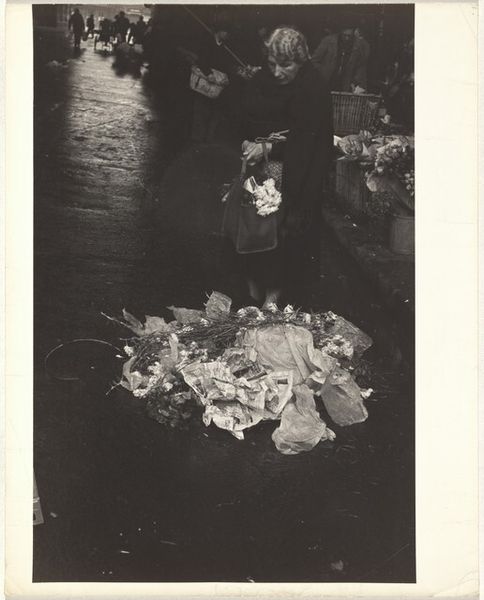
photography, gelatin-silver-print
#
portrait
#
photography
#
historical photography
#
folk-art
#
gelatin-silver-print
#
clothing photo
#
genre-painting
#
realism
Dimensions: height 163 mm, width 224 mm
Copyright: Rijks Museum: Open Domain
Editor: We're looking at Richard Tepe's "Boerin in Bunschoter klederdracht voert de kippen", or "Farmer's wife in Bunschoten costume feeding the chickens," a gelatin silver print made sometime between 1900 and 1930. I'm struck by the textures - the rough brick wall behind her and the crispness of her traditional clothing. What's your perspective on this photograph? Curator: It's important to consider the materials used to create this image. Tepe carefully manipulated chemicals, light-sensitive paper, and the gelatin-silver process. Think about the labor involved in crafting such a detailed image in the early 20th century. It speaks volumes about photographic processes becoming democratized and accessible during the Industrial Age, allowing us to represent, and perhaps, romanticize the work of ordinary people. Editor: Romanticize? How so? Curator: Consider the presentation of labor. The woman is portrayed in this idealized rural setting. But what does this photograph obscure? Think about the hard physical labor inherent in rural life at that time, aspects perhaps glossed over to serve urban sensibilities eager to reconnect with a seemingly simpler past through images that mask more brutal truths regarding land ownership and manual, grueling processes of agrarian production. What do you think someone in the city would think about this at the time? Editor: That's fascinating! It makes me think about how the image is crafted as a commodity itself, feeding into a particular view of rural life. Curator: Precisely! Photography, like textiles and food, is a material product deeply interwoven with the complexities of social and economic life. And remember, it would become a tangible good purchased and circulated, shaping and reflecting desires for authenticity, tradition and simpler existences removed from urban experience.
Comments
No comments
Be the first to comment and join the conversation on the ultimate creative platform.
